This experiment is one of my favorites. I’m testing to see if I am still insulin resistant with an Oral Glucose Tolerance Test (OGTT), using two different scenarios.
- Performed OGTT while on a fat adapted, VERY low carb diet
- Tested again after carbing up for three days and glucose adapting
I started out only wanting to test my insulin resistance, but ended up testing much more. When it comes to medical care and nutrition, because so much ‘science’ has been corrupted by large corporations, we must learn from self-experimentation.
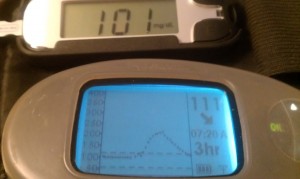
I’ll explain in full below, but the picture above is of my blood sugar reading two hours after my glucose tolerance test ingesting of 75 grams of sugar. This one reading puts me on the borderline pre-diabetic/non-diabetic, especially given the variances of the meters. Other factors point to me still being a diabetic, more info below. :)
“I successfully manage diabetes with diet and exercise” and that diet is a ‘low carb paleo meal plan“.
I never say that I cured my diabetes … never. Do you know why? I am still insulin resistant.
First Things First
I performed a “Strict Low Carb Paleo Experiment“, to answer nagging questions. Would a ‘strict low carb paleo meal plan’ (for 30+ days) affect my insulin resistance?
A generous person lent me their Continuous Glucose Monitor (CGM), it provides blood sugar readings every 5 minutes, so I was stoked!
By the way, I do not recommend doing this until you have normal blood sugars, are drug and insulin free AND you have broken the carb, grain, sugar addiction for at least two months… if then. Why? 75 grams of sugar could trigger the addictions … on never knows.
Why test my Insulin Resistance
A friend and I were discussing some of my blood sugar test results, they were so close to ‘normal’, some of them made us think that my insulin resistance was greatly reduced… so much so that one day the person said,
“Eat some sugar!!! C’mon glucose tolerance test! This is the time to do it.!”.
The “Oral Glucose Tolerance” test is a standard medical test for determining if someone has diabetes. I decided to take the test the next morning.
I had been eating 60-90 grams of carbs for only three out of the last four days in an attempt to re-adapt to glucose. My plan was to eat this way for two weeks, so I had another 10 days on this plan.
My thought would be that it would be a good ‘baseline’ to see if the results varied much at the end of the experiment.
First OGTT Results
9:20 Drank 75 grams of Sugar
10:20 After One Hour Blood Sugar = 236
11:20 After Two Hours Blood Sugar = 182 (180 confirmed)
To interpret those results, here are the generally accepted standards by the medical profession for the 75 grams of sugar OGT test. Joslin is a Diabetes Research Organization and an ADA Minion, according to their guidelines…. (click here for their webpage)
- In normal glucose tolerance, blood glucose rises no higher than 140 mg/dl 2 hours after the drink.
- In impaired glucose tolerance (IGT), the 2-hour blood glucose is between 140 and 199 mg/dl.
- If the 2-hour blood glucose rises to 200 mg/dl or above, a person has diabetes.
In other words, if you are 200 mg/dl or more, two hours post glucose consumption you are diabetic. If you are 140-199 then you have impaired glucose tolerance and if you are less than 140 mg/dl, you are normal.
This first test put me squarely in the “Impaired Glucose Tolerance” column. I was somewhat disappointed but … I was just glad that my blood sugars were no longer in diabetic ranges.
Note: Other sites also add that, if at any time during the test you exceed 200 mg/dl, it’s a sign of impaired glucose tolerance.
Change in plans…
Michelle Trevino reminded me the other day of a post by Peter Dobromylskyj. In the post he is talking about ‘very low carbers’,
“… if you take an oral glucose tolerance test you will fail and be labeled diabetic.”
I urge you to read the entire post but to boil it down, Peter describes what I would call a ‘carbohydrate intolerance’. To re-adapt our bodies to consuming carbohydrates and to more accurately reflect our true ‘glucose tolerance’ on the OGTT, Peter suggests eating 150 grams of carbs for three consecutive days.
For me, I was growing tired of eating high carb meals and I still had another week to go. The thought of only doing it for three more days even at higher levels appealed to me…. so I tried it.
Glucose Adapting
For three days, I consumed 150 grams of carbs. I did this by eating potatoes, rice, bananas, apples and yes… by drinking sugar water.
I will report on all of those days and the affect on my blood sugar but for today … let me just show you the results.
After (3) days of consuming 150g of carbs…. this was my next Oral Glucose Tolerance test results.
Second Oral Glucose Tolerance Test
(The glucometers are more accurate than the CGMs, especially when the sugars are moving rapidly.)
FYI – I had a couple of goals. First, I wanted to be below 200 mg/dl after two hours. After eating all those carbs for three days… I did not know what to expect. I really did not want to be in diabetic ranges.
Second, I wanted to be below 140 mg . That would not only mean that my blood sugars were not in diabetic ranges … but they were in ‘normal ranges’.
Below are the pictures in sequence… it really was exciting to see my blood sugar levels drop. Would I reach my goals?
This was the half way point home, one hour into the test. At this point I was VERY worried. The arrow is still pointing up… which meant my blood sugars were moving higher. An hour ‘in’ and I had no idea how it would turn out.
FYI – The top picture is the glucometer, it’s a more accurate reflection of blood sugar levels and it’s approximatly 15 minutes delayed.
The first good news! …. the down arrow points to … DOWNWARD MOVEMENT!!! which means lowering blood sugars!!
176 mg/dl with 40 minutes left. This was VERY encouraging because in the past, the ‘real’ movement was in the last 30 minutes as my pancreas’s insulin production ‘kicked in’ in earnest.
Oh HELL YEAH! … 156 AND …. a straight down arrow!! My primal body was doing it’s job… BIG TIME!!
This was going to be good … I still had 30 minutes left. :))
The picture above is important.
At sub 200 mg/dl, I am no longer in diabetic ranges but also at sub 140 mg/dl, technically I am no longer considered to have “Impaired Glucose Tolerance”… in other words, I am normal. :)
No worries… with 20 minutes left… there’s two more pictures. :)
At this point, I had ‘pricked’ my finger more times in one day that I would normally do in MONTHS.
But it was worth it. The final picture was 101 mg/dl. This confirmed an earlier picture of 96 mg/dl.
Check out that cool chart!!! … it rose fast and dropped fast, like it should!
Also, look at that steady rate of decline too … LIKE A MACHINE!!! :)
…this picture was my body’s reward. :)
Summary
Not ONLY is this a test of my glucose tolerance but it’s also a test of Peter’s advice. Here are the results of the 2nd OGTT test with the improvements over the initial test. In other words, Peter was right. :)
At least by one medical industry measure I am no longer diabetic and in fact I am borderline ‘normal’. I would prefer to be 83 mg/dl after two hours. Obviously, with a reading over 200 mg/dl I still suffer from insulin resistance.
5:20 Consumed 75 grams of Sugar Water
6:20 After one hour, blood sugar = 209. Net improvement of 27 points!
7:20 After two hours, blood sugar = 101. Net improvement of 79 points!
I am truly glad this is over. I truly do want to return to my ‘very low carb, strict paleo’ meal plan.
As I type this it’s been almost 12 hours since I consumed the ‘sugar water’. My brunch was bacon, eggs and beef (with a few spinach leaves) and I do not have any cravings for carbs or sugars….
I stepped into the sugary abyss … and have walked out intact.
I will say this, my warnings not to try this are sincere. I often tell diabetics who are addicted to carbs, “You never know how many more ‘cheats’ you have before you cause permanent damage.” I thought those thoughts about myself for the first time in a long time.
—-
Dear Pancreas,
I do apologize for abusing you for this experiment. I am finished for now….. no more 150 gram carb days, no more sugar water.
Thanks for holding up so well.
Live Facebook PMs
Here are messages left for on friend’s Facebook chat window ‘live’ at the time of the OGTT.
Lower Your Blood Sugar Naturally
If your blood sugars are elevated and you cannot achieve truly normal blood sugars with diet alone…
READ MY BOOK! How to Reduce Blood Sugars.
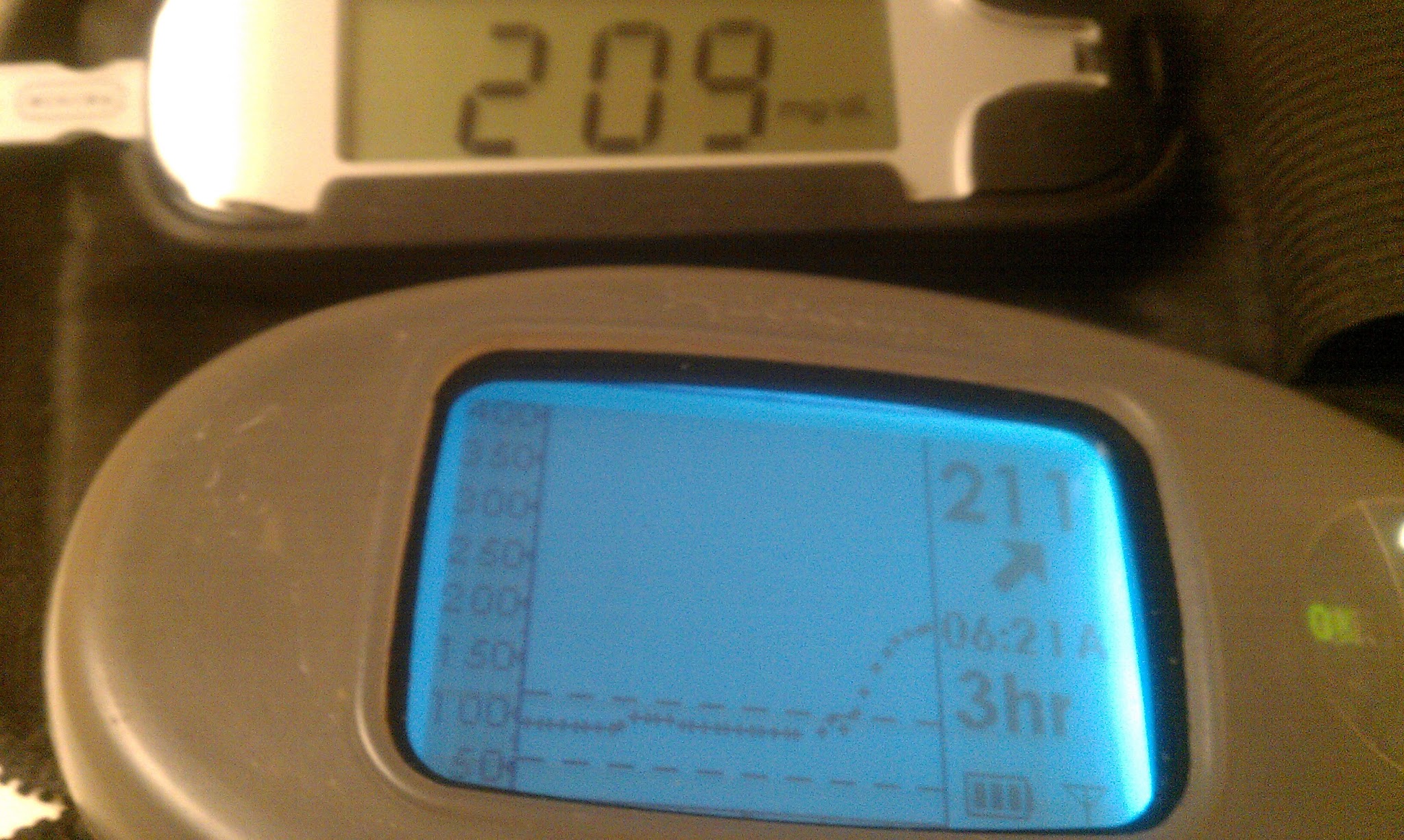
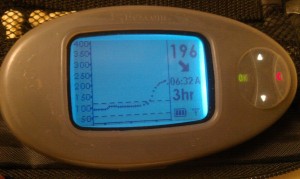
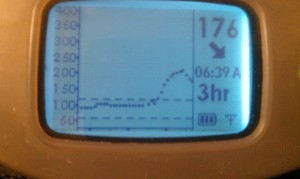
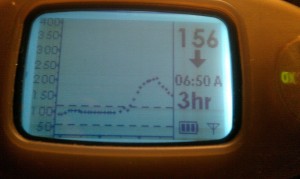
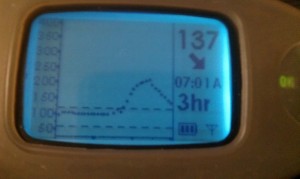
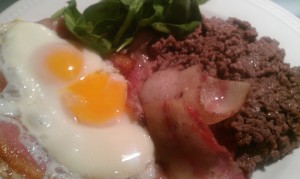
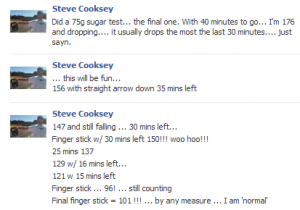
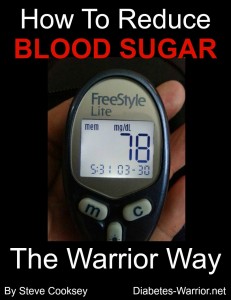
WooHoo that is so awesome!…and fascinating! Thanks for sharing it with us. So am I to understand that it isn’t necessarily the spike that is bad, but it is bad if the spike takes a long time to come back down?
Leah, thanks. :) I am not a doctor etc… My goal is to stay below 100 mg/dl as much as possible. (except when I experimenting). I personally do not like the spikes but I was glad to see how quickly my body discharged the glucose.
I don’t know but I feel sure that I spent years with high blood sugar causing damage to the cells in my body before my diabetes diagnosis… I want to give them ample opportunity to heal themselves.
PLEASE PLEASE…PLEASE i need the book or list of foods with low GI. I am always crbing for carbs (specially bread) and I really need a list of goods I like (i don’t eat processed food if i can help it) but my sugar levels are too hight. I would really appreciate for a list of these low GI foods. celia.younger@gmail.com
Steve, didn’t you say your OGTT 2h results before were in the 300 range? Now they’re in the 100 range. From where I’m sitting, you’re cured. No more diabetes. Must be all the drugs you didn’t take, huh? :) Take that to the doctor who diagnosed you, let’s see what he says now. I bet he won’t believe you. But the important thing is that your readers believe you. I know I do. Just keep doing your thing.
Martin,
Thank you for your comment. I purposely did not use the “C” word for many reasons but just two for now. :)
1) I want to do the test in an official setting so the info can be documented etc.
2) I want to recheck it later to confirm the results in 6 mos to a year …. ‘cure’ needs to be permanent. :)
… my goal is to continue on my current path and push to remove the remaining ‘glocose tolerance’.
Also, my previous 2 hour results were 180 and 182 ( I always test twice to confirm).
Really fascinating stuff, Steve. You are literally fixing your body. Whether it’s permanent or not, It shows you can tolerate a cheat if you so desired (although I am guessing there’s no reason to cheat when bacon, eggs and beef are involved).
Great post about a great experiment. High numbers, but case closed, pretty much?!
It also makes me wonder if more paleo-type carbs would have the same effect as bad carbs like sugar, flour, etc. After all, 100 carbs of real fruit and vegetables isn’t the same as that amount in say, Hostess cakes. (hahaha!)
Not that I want you try this?!?!
Keith… the case is never closed. :) There will be more experiments as always. While I have the CGM I will continue to test foods and exercises etc. Just no more 150g days of sugar water & potato etc.
The sugar, fruits, potato and rice ‘testing’ was not really about testing those items… I consumed those to re-adapt my body to carbohydrate consumption. While I was consuming them to re-adapt, I did record and will reproduce the data as time allows. The goal was to re-adapt… I could have eaten 150g of carbs from spinach… (maybe) but I don’t think that would go a long way to readapt my body for carb consumption. :)
No doubt lower carb veggies will have a different outcome than sugar etc. :)
Steve, you’re my hero, seriously. I am absolutely in love with your site. I’m not diabetic, but I have pcos & insulin resistance, and I’ve only recently begun conducting n=1 experiments on myself using a glucose monitor, and it has been eye opening to say the least. Even though I was primal/paleo before the n=1 experiments, I was eating a lot more starch/fructose/carbs than I thought I was. I’ve dropped almost 10 lbs already (since using the glucose monitor), and thanks to you, I’m totally motivated to punch my insulin resistance in the face. Thank you so so so so so much for your work and your blog. You are such an inspiration! =)
You are welcome and sincere thanks Monica….for the thanks. :) All the best with your IR and PCOS issues. I am interested to hear about your N=1 so please keep me updated.
Steve. Like cpmt, I too would like ” the book or list of foods with low GI”. Could you please post it or email it to me at kevin@earley.net?
Thanks,
Kevin
Sorry for the delayed response Kevin.
Not sure if this is the exact book but it’s by the same author, same topic. Again… this was just a ‘start’ for me. :)
http://books.google.com/books/about/The_Low_GI_Diet_Revolution.html?id=cUz1wJMlGDkC
Thank you so much for posting this! I am Type 1 diabetic and also have PCOS. Since the delivery of my 3rd child, my body has been totally insulin resistant to the point where my doc has me on both insulin and metformin tying to control the IR. I have been playing with the idea of the Paleo diet and found your blog from a link on the Just Eat Real Food FB page. I have heard good things about the diet with diabetes, but most articles/blog posts are about type 2. I have a CGM and will be diving into the Paleo world :) thanks!
You are very welcome Bethiev. Apologies for such a delayed response, I was inundated with spam comments.
Hope this reply finds you well.
OK, I admit I’m a pedant. Did you do the OGTT with *sugar* or with glucose ?
To compare against the guidelines it needs to be done with glucose, as sugar or HFCS is only about half glucose and hence reads lower on the meter.
No worries Phil, it was with sugar as in table sugar … I know it’s not an ‘exact’ duplicate administered by a doctor.
I am planning on doing another test in Feb, my 5 yr anniversary. I’ll do a ‘all glucose’ test this time.
There’s a link provided in the post showing that even Jelly Beans can be used in testing.